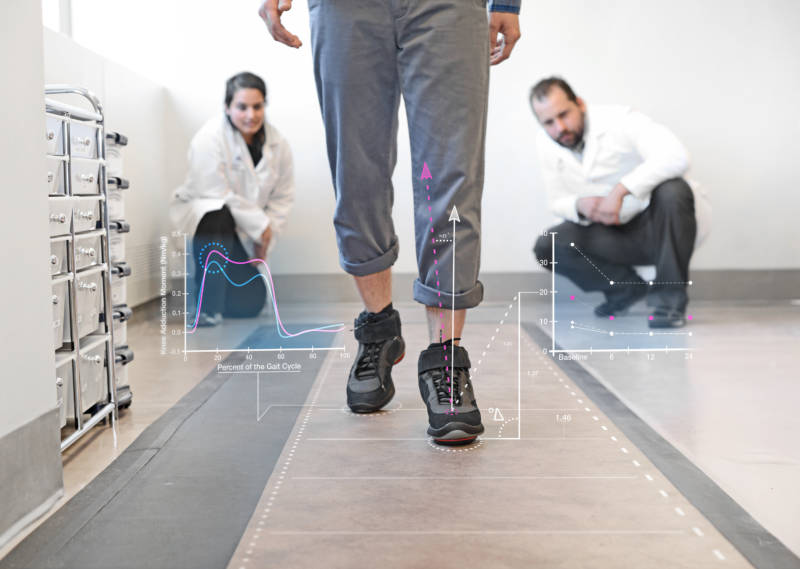Currently prescribed by doctors at Mount Sinai and administered by physical therapists, the sneakers are outfitted with two semi-oval pods on the bottom of each sole. These are meant to redistribute weight and strengthen weaker muscles, reducing the stress on knee, hip and back joints.
When patients are in pain, they often change the way they walk, says Mount Sinai physical therapist Steven Venegas. They favor one leg over the other, shorten their stride or bend their knees less to reduce the impact on joints,
This walking pattern means some muscles start to work less and others work more to compensate, he says.
The AposTherapy shoes are intended to correct a person's gait and allow them to start engaging the underutilized muscles again. Better muscle control and stability then alleviate pressure on painful joints.
The company got its start in Israel in 2005, expanded to the UK, and is now headquartered in New York City, the only place in the U.S. where the shoes are currently available. A handful of physical therapy practices and hospitals are trying them out. Healthfirst is the only insurer in the U.S. to cover the cost of the shoes.
Dr. Joseph Herrera, the chair of Mount Sinai's rehabilitation medicine department, has been recommending the shoes to his patients.
"It’s actually been remarkable," he says, "we’ve had great patient satisfaction."
Researchers at the hospital are actively enrolling more patients to join the 30 already participating in a clinical trial.
Satisfied Customer
One satisfied patient is 35-year-old Summer Dion, a professional hip-hop dancer with a medial meniscus tear, mild knee osteoarthritis and a stress fracture in her back.
After having received a cortisone shot and physical therapy, her left knee started to swell, she says, so Herrera recommended Apos. Dion says the pain in her back subsided after a week of wearing the shoes.
"I feel like it’s working and I wish I could wear them longer," she says. "What sucks is taking them off because then you have to put regular shoes on or you’re walking barefoot and you're not in that perfect alignment anymore."
The therapy has received a smattering of positive press over the last few years, but not everyone is enthusiastic. Stanford spine surgeon Todd Alamin questioned Apos' medical studies, calling them, "relatively poor," with "weak evidence."
And then there's the price. The out-of-pocket cost is $5,000, Herrera says, for those not covered by Healthfirst.
Apos says health care providers set the price and the cost includes a fitting with a physical therapist and multiple follow-up sessions.
Alamin says, "If their shoe is worth the money, they should have better data."
One study, published in BMC Musculoskeletal Disorders, lasted eight weeks and involved 57 patients, including a control group. It found significant improvements in the patients who used the shoe, and no improvements in the control group.
A lengthier study followed 40 participants over two years, but didn't find a meaningful difference in improvement between those using the shoes and a control group.
Researchers expect results in the Mount Sinai trial by the end of this year.
